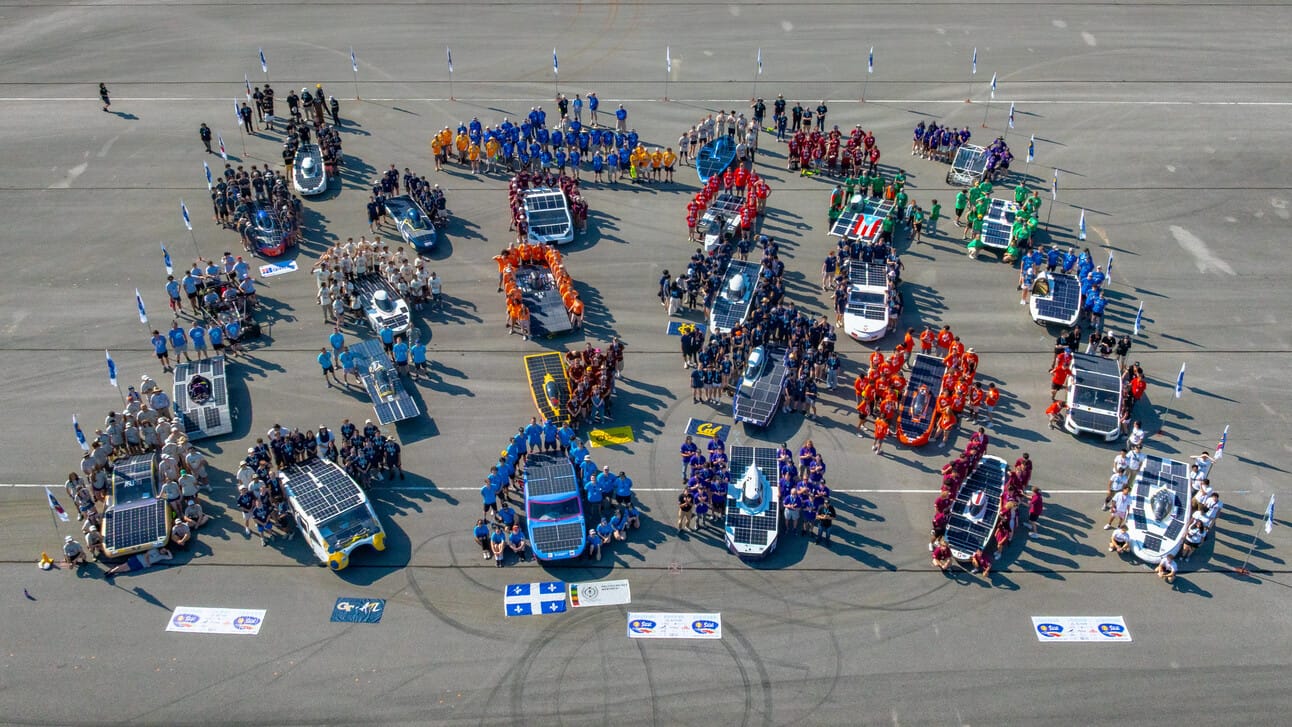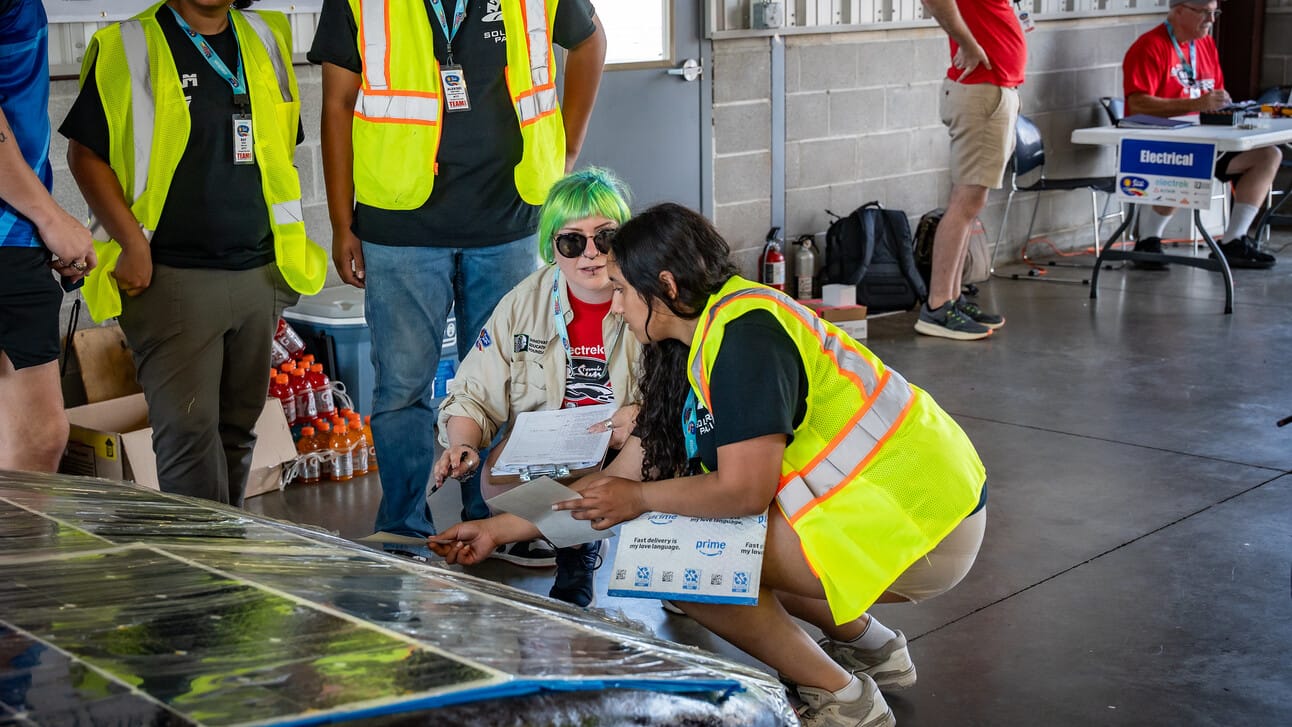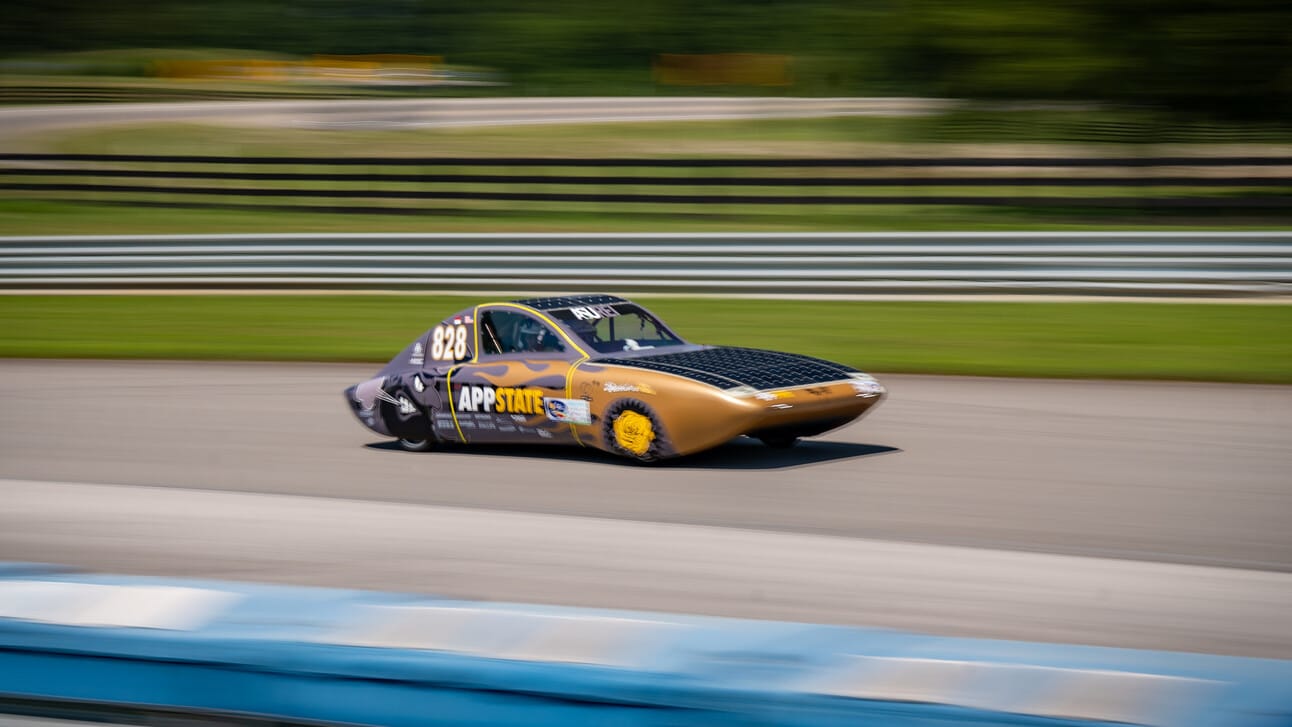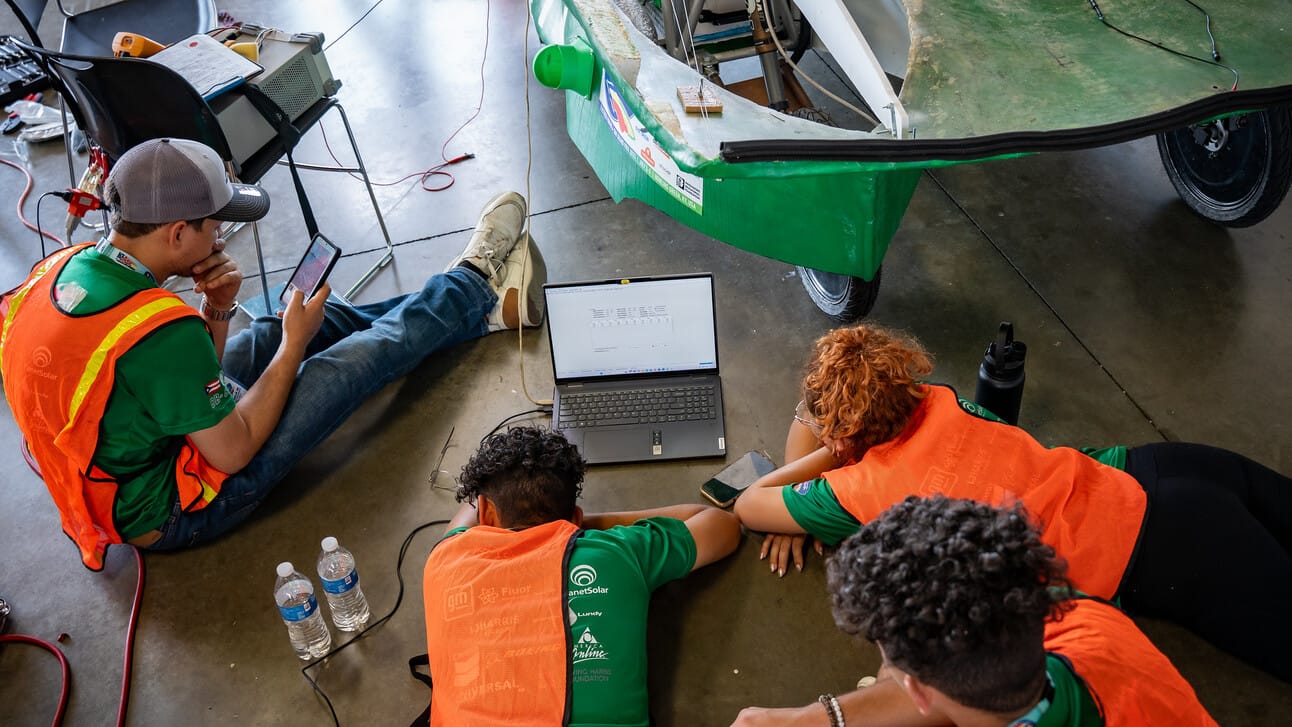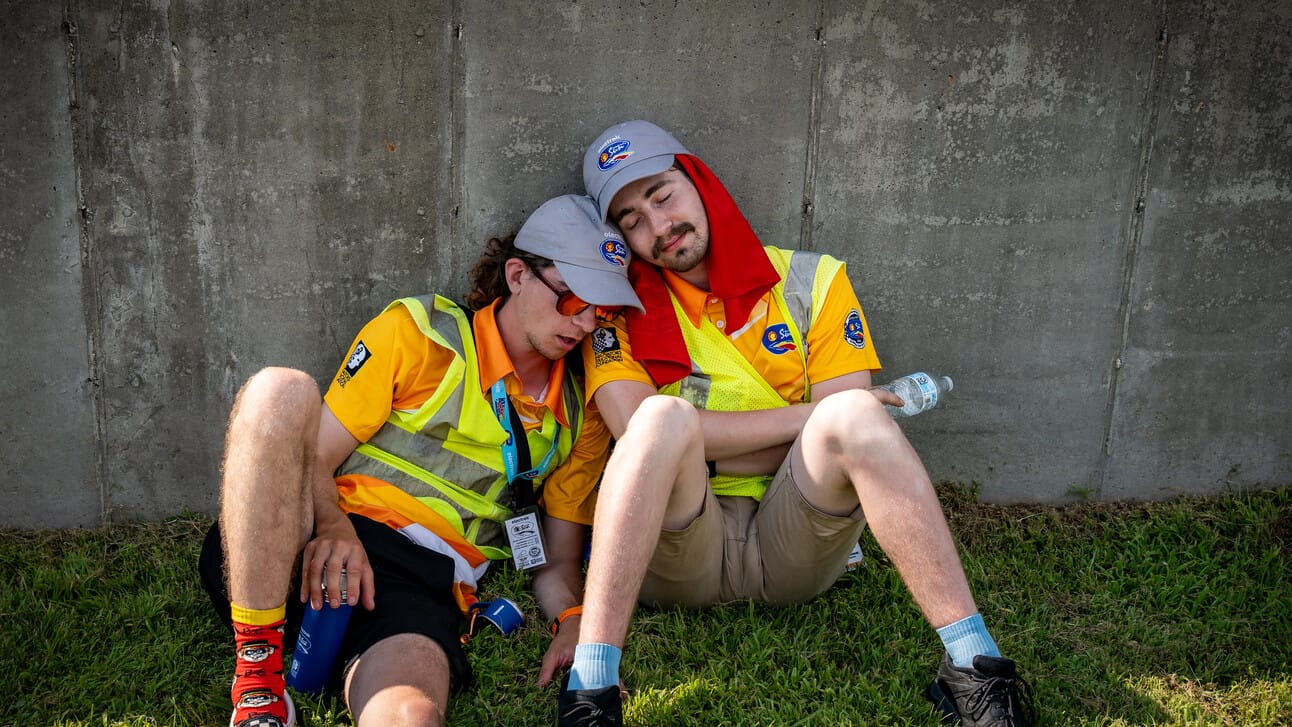- Make Things
- Posts
- Formula Sun
Formula Sun
Live from America’s premier solar car race
The fierce Kentucky sun was already pummeling the black asphalt track as the green flag dropped at the start of Electrek Formula Sun Grand Prix at the National Corvette Museum Motorsports Park in Bowling Green, Kentucky. A diverse array of vehicles assembled on the starting grid in all manner of colours, shapes, and sizes. Uniting them all were myriad solar cells enveloping every available sun-facing surface, arranged to maximize charging efficiency while minimizing aerodynamic impact. As the cars slowly rolled forward from their starting positions, I explored other goings-on at the track facilities — rather than hanging around for the five to ten minutes (or more) it would take for them to pass me again on the completion of their first lap.
Table of Contents
Scrutineering
Out of 30 cars, around a third were present on the starting grid — the rest were in various states of repair or scrutineering before they were allowed on the track. One of the most visually exciting parts of pre-race inspections is “dynamics” which consists of moving tests such as the slalom (weaving between cones), figure eight, and wet skid pad test. The latter saw cars approaching an area of the tarmac with sprinklers dousing its surface as they attempt to come to a complete stop from a given minimum speed. Failure to do so under a certain time means your car is unsafe for track competition (let alone the road-going American Solar Challenge event which the FSGP serves as a qualifier for).
Experience and equipment levels varied wildly between teams, and while some of the more experienced teams nailed the trials on their first attempt, others struggled over and over to clear the minimum times, sometimes even being turned away to improve their braking or stability before trying again. Another brutal challenge was “egress” – the requirement that all drivers be able to exit their vehicle in under ten seconds, in the event of electrical fire or other catastrophe. I watched with a tear in my eye as one hopeful driver failed over and over to push open their canopy and leap clear of the vehicle in the required time, thus disqualifying them from participating. Another team desperately tried to get their vehicle through the previous tests in order to make it to dynamics after traveling all the way across the country to get here, only for the sun to literally set on their dreams as dynamics closed for good that night.
Trackside
I was honestly surprised by the speed of some of these hand-built vehicles. On a track more accustomed to hosting Corvettes, for whom a great lap is a little over two minutes, these vehicles, often more resembling boats, initially lumbered slowly away from the start line. On the second day, watching from the timing deck on the second floor, things were far spicier, with clusters of vehicles jockeying for position. While the Single Occupant Vehicle (SOV) class simply chases laps, the leviathan Multi Occupant Vehicles (MOVs) have a far more complicated scoring system, part of which requires that they maintain a minimum average speed of 30mph. The score is also multiplied by the number of occupants, resulting in one team attempting a four-person vehicle vs. the typical two. With cars lapping down closer to the 5-minute range, the excitement was amplified, especially as the behemoth MOVs traded position every other lap. Cars are limited to 65mph on the track (if they can attain it), although one team told me they were technically able to exceed 80! A particularly steep area of the track caught several slower cars off guard, necessitating rescue from the corner crews who continually monitor the track throughout the event. While I was writing this newsletter I heard tell of a multi-car “kerfuffle,” but I’ll have to get back to you on what that entailed after I hit the send button in a bit here.
Community
More than all the fancy electronics and exotic materials, what really stood out was the camaraderie and determination of the participants. I encountered countless stories of rival teams and event volunteers (many of whom were former competitors) coming together to help get a vehicle ready, or loan a part, or share a snack. Over and over, phrases like “can you repeat that? I just pulled two all-nighters and my brain isn’t working properly right now!” escaped particpants mouths. After track time, when cars were allowed to continue charging for a few hours before their batteries were impounded, competing teams freely exchanged construction techniques, electronics knowledge, and racing expertise (just don’t ask about their SoC (State of Charge)!), and were extremely welcoming to my questions and curiosity, despite having been pushing flat out for days. Afterward, in the pits, the smells of team barbecues intermingled with the beats from different crews’ speakers, while fatigued participants collapsed in various states of repose around them.
Other than an extremely brief dalliance with the University of Michigan solar car team as a student there, this was my first involvement with solar car racing. Everyone was extremely welcoming and accommodating, but I wanted to give a special shout-out to Ruvini, Gail, Jason, and especially Cameron for showing me around, introducing me to people, and reminding me to drink water and wear sunscreen!
David Groom, desperately trying to rehydrate after two days under a 92°F Kentucky sun!
Make Things is a weekly newsletter for the Maker community from Make:. This newsletter lives on the web at makethings.make.co
